- Home
- Consciousness
- science of consciousness
The Science of Consciousness
What does consciousness mean from a scientific perspective? Is there such a thing as "the science of consciousness"?
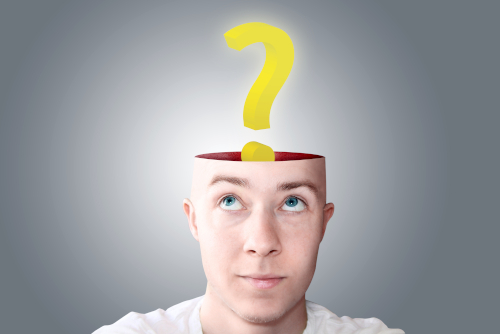 The scientific puzzle of consciousness;
ID 32643002 © lassedesignen | Adobe.com
The scientific puzzle of consciousness;
ID 32643002 © lassedesignen | Adobe.comThere are in fact two kinds of science of consciousness:
- science of consciousness from the outside (objective).
- science of consciousness from the inside (subjective).
The science of consciousness from the outside
This is science in the modern sense, as in neuroscience. Information about the brain and its role in consciousness has been gained through experiments. For example, an experimental subject (a person) is asked to do something and, while they are doing it, measurements are taken of the activity of their brain.
Anatomy of the Brain
Your brain weighs around 1.4 kg (or 3lb). It is grey on the outside and wrinkled like a walnut. Just like a walnut it has two halves. A view of the brain sitting in your skull is shown in the diagram below. The view is from above, looking down. (Note that the colours are part of the illustration and not of the brain itself!).
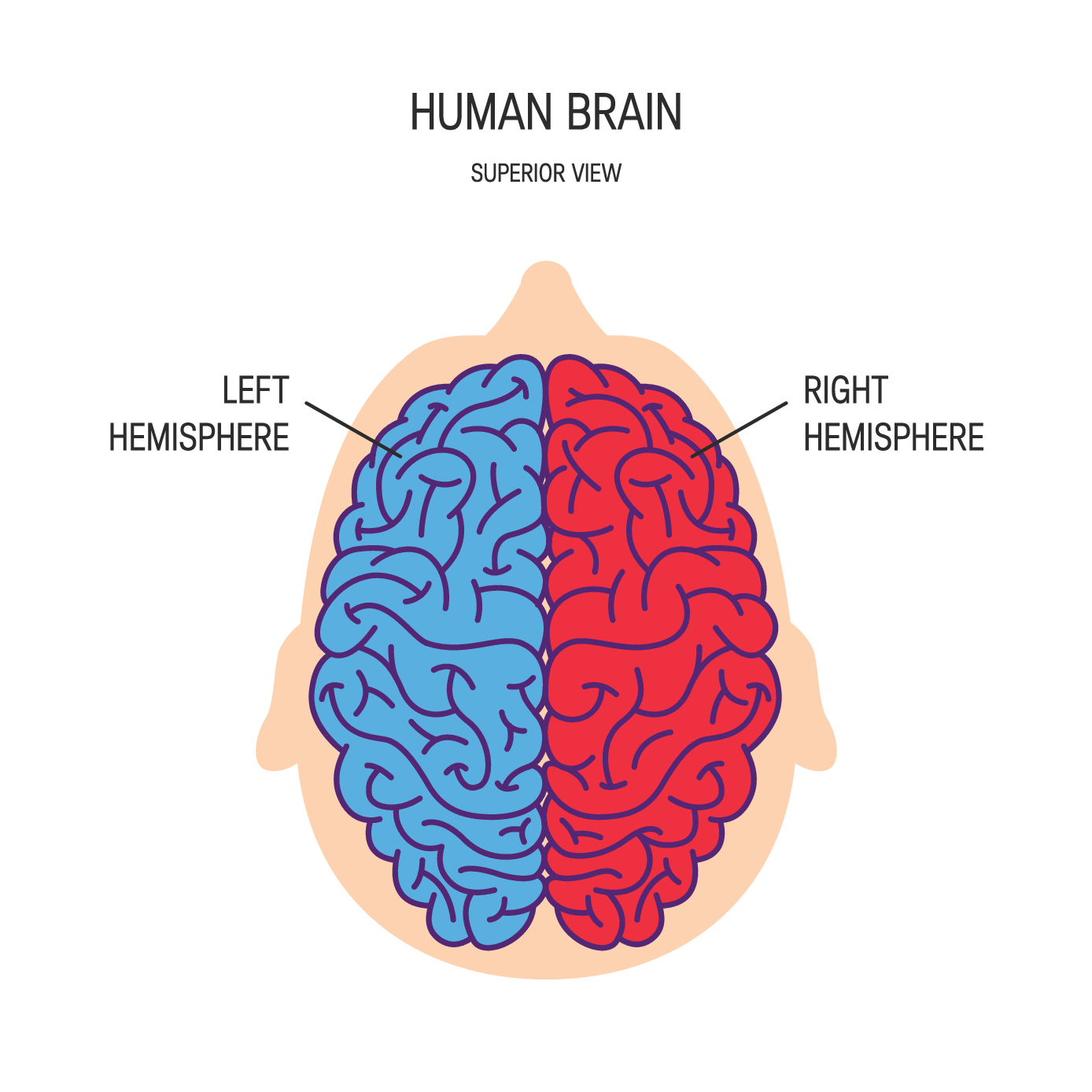 The hemispheres of the brain, viewed from above;
ID 229842872 © marina_ua | Adobe.com
The hemispheres of the brain, viewed from above;
ID 229842872 © marina_ua | Adobe.comScientists are already familiar with the anatomy of the brain - the
different parts it has and where they are in relation to each other inside the skull. Here is a side view of the left hemisphere. Again, colours are used in the illustration to help identify the different parts. The surface of the brain (except for the cerebellum and spinal cord) is grey all over and is called the cortex.
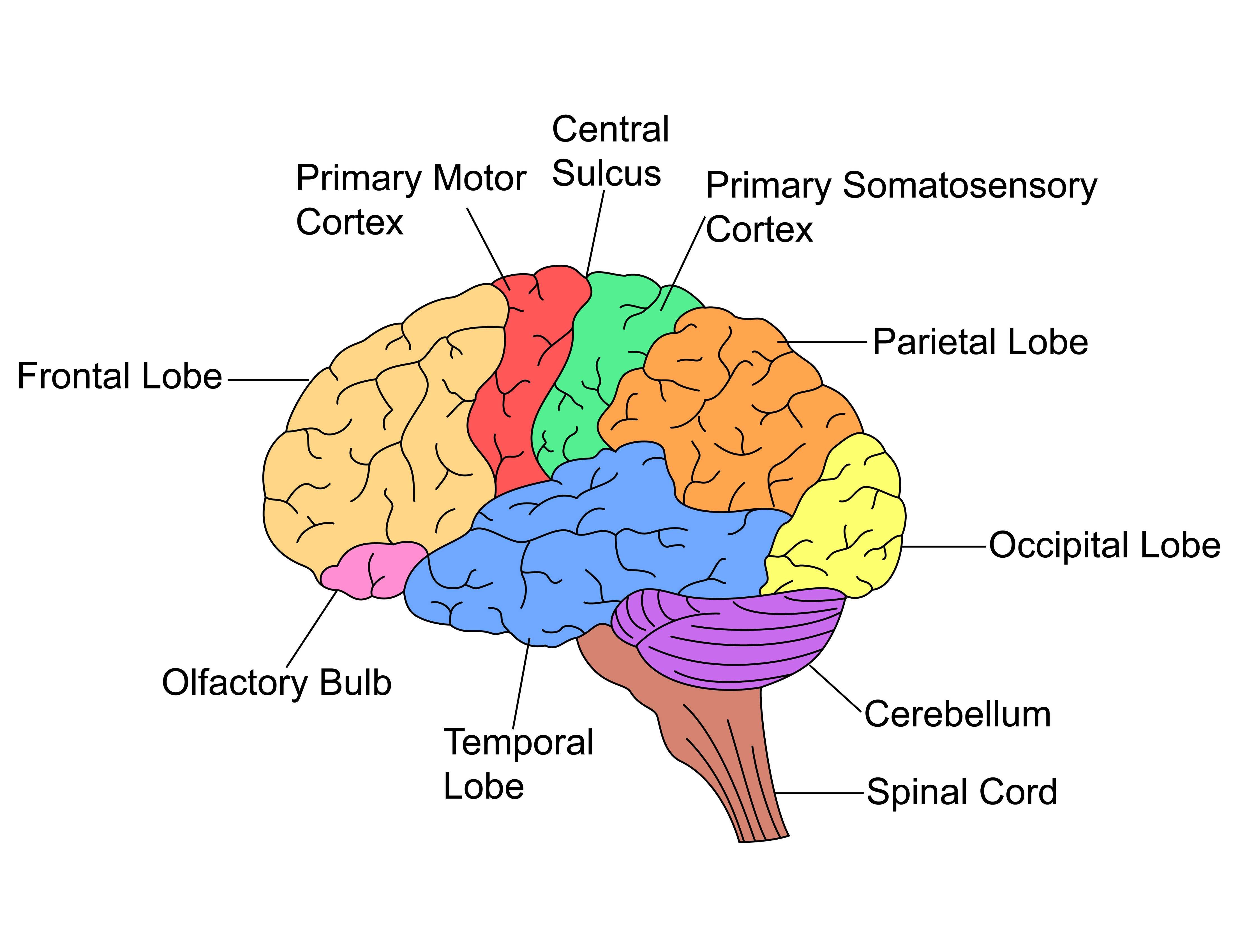 Left hemisphere of the brain;
ID 130878591 © mrhighsky | Adobe.com
Left hemisphere of the brain;
ID 130878591 © mrhighsky | Adobe.comHere is an illustration of the inside of the brain. The brain has been sliced down the middle, between the two halves, and then opened up so you can see inside:-
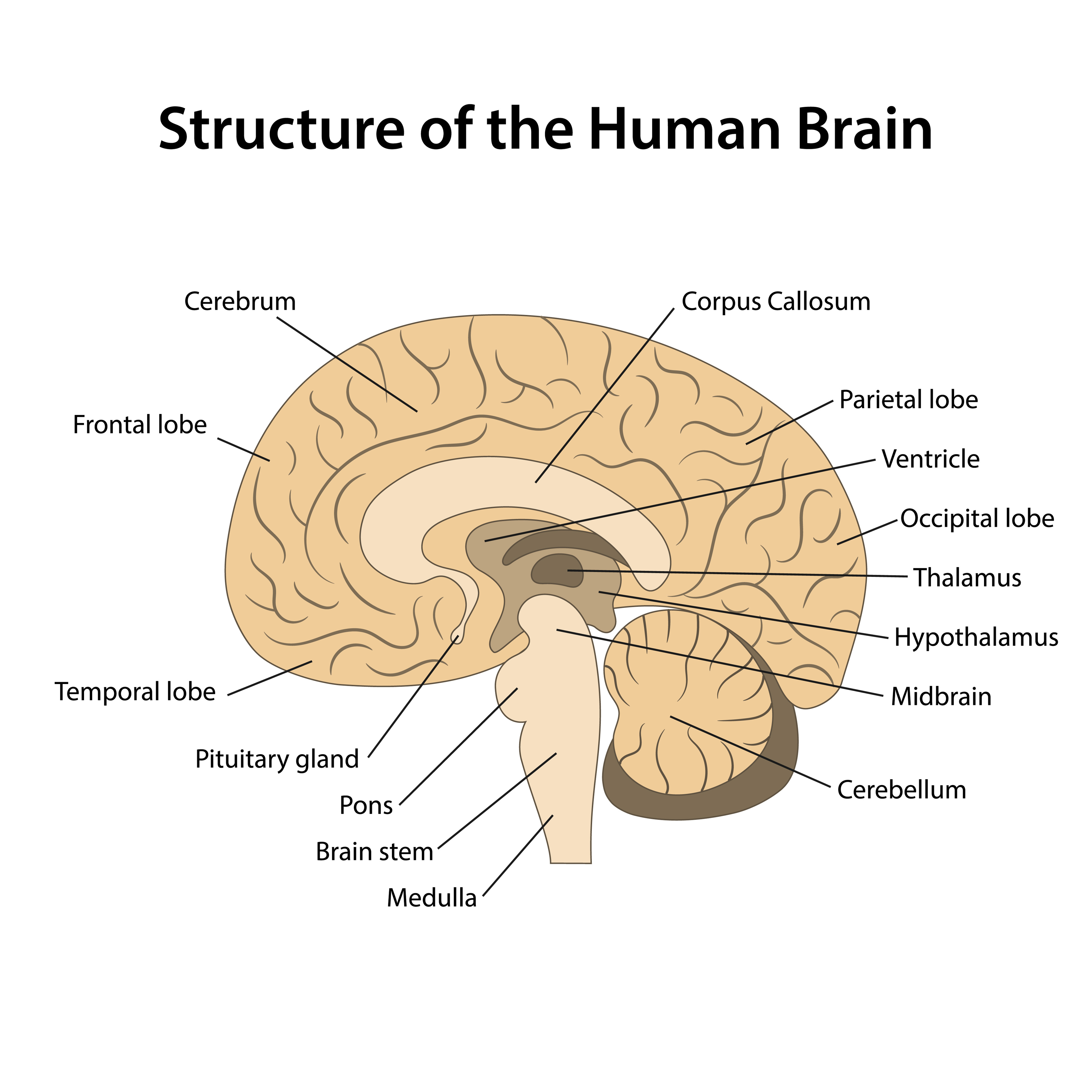 Vertical section through the brain;
ID 354794668 © Olga | Adobe.com
Vertical section through the brain;
ID 354794668 © Olga | Adobe.comThis knowledge originally came from dissection of dead bodies. Now,
images of the inside of any part of the body can be made using an X-ray
machine or an MRI scanner, without cutting the body open. This makes it much easier to gather information to help develop the science of consciousness.
MRI Scanner
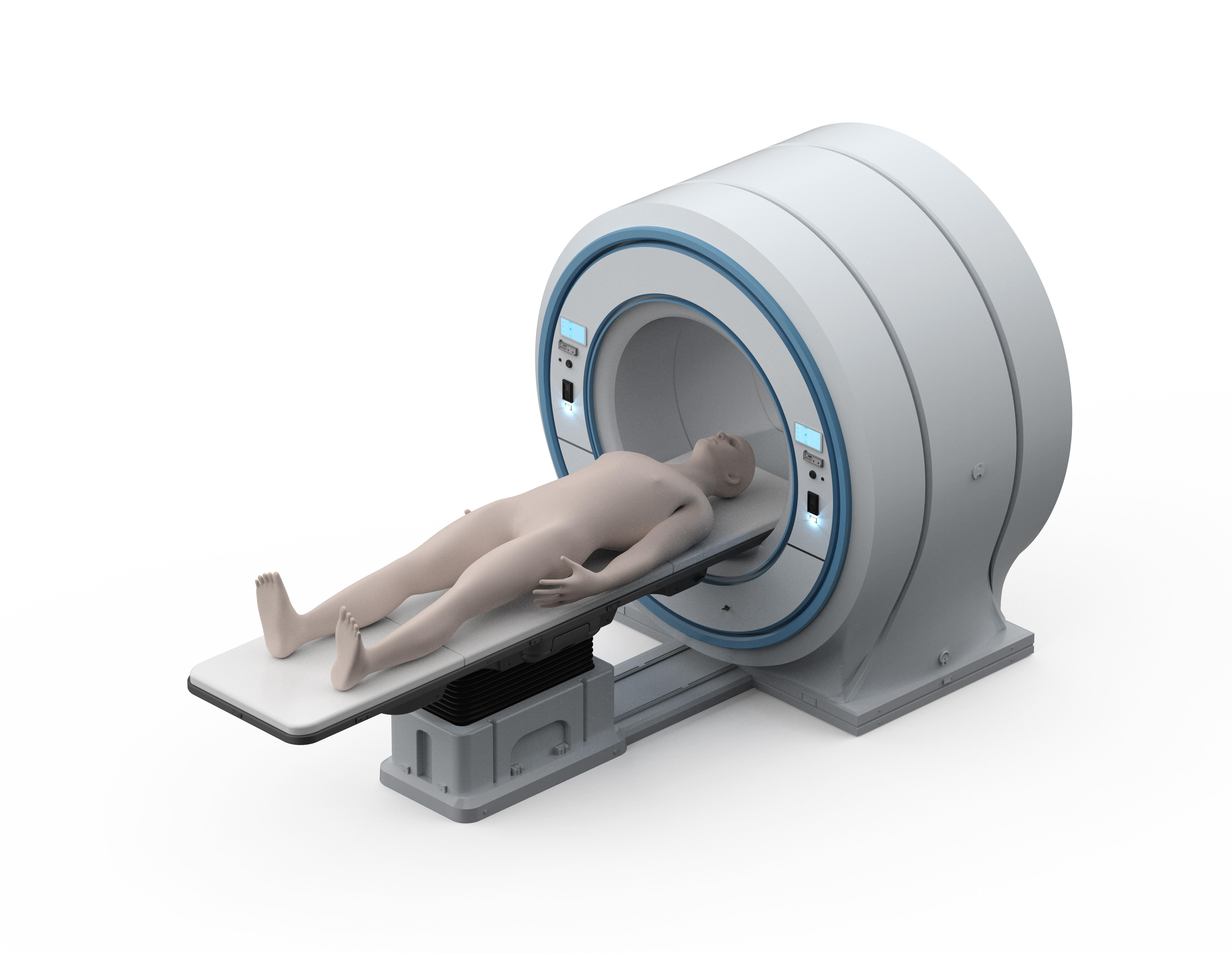 An MRI scanner with a person about to be moved inside; ID 335718015 © phonlamaiphoto | Adobe.com
An MRI scanner with a person about to be moved inside; ID 335718015 © phonlamaiphoto | Adobe.comMRI is short for "Magnetic Resonance Imaging". An MRI scanner uses
the fact that the nucleus of a hydrogen atom behaves like a very weak
magnet. Hydrogen atoms are found throughout the body in water molecules
and in the fatty tissues such as those found in the brain. These extremely little magnets in your body can be influenced by the strong magnetic field from the scanner.
Here's how it works:
First, you lie on a bed which is then moved inside the scanner.
Inside the scanner, a very strong magnetic field causes the tiny hydrogen magnets in your body to align themselves with the field - just like a magnet in the lab can make iron filings line up. The scanner then applies a varying magnetic field on top of the fixed one.
This varying magnetic field
vibrates at a specific frequency that makes the tiny hydrogen magnets
vibrate. They "resonate" with the vibrating field. As they do this, they pick up
energy.
When the vibrating field is switched off, the nuclear magnets settle back to the fixed direction, releasing their vibrational energy in a burst of radio waves.
These bursts are detected by special
sensors in the scanner. The process is repeated many times and, with the
help of a computer, the MRI machine forms an accurate image of the
inside of the brain.
MRI Images
The image is presented in the form of "slices" through the head, either vertically or horizontally. Doctors and brain scientists can look at different slices to help them work out what is going on.
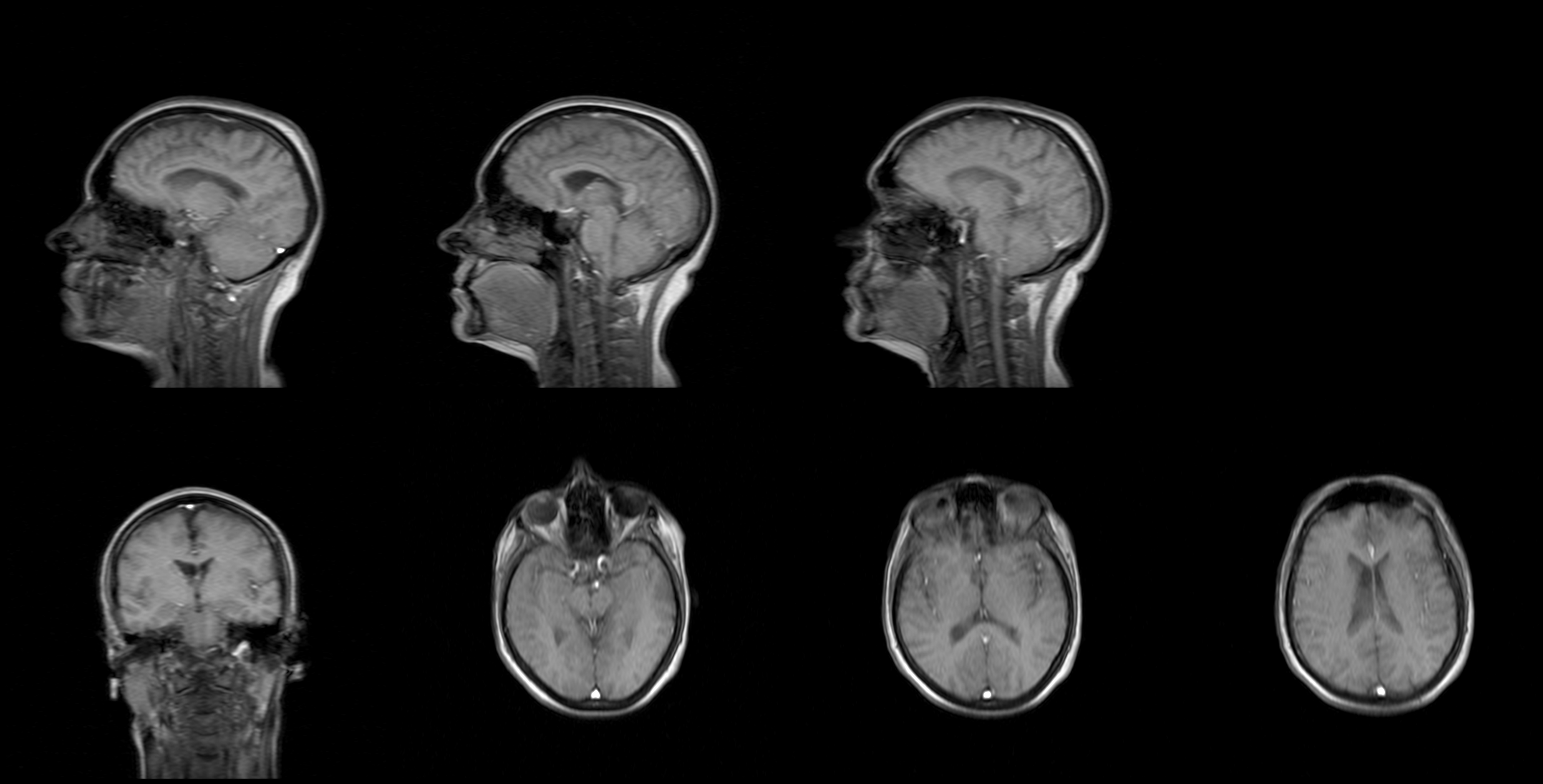 MRI images of the brain - vertical and horizontal slices; ID 344869542 © lucky pics | Adobe.com
MRI images of the brain - vertical and horizontal slices; ID 344869542 © lucky pics | Adobe.comThe MRI scan shows the position of nerves, blood vessels and fatty tissues in the different parts of the brain. Any abnormalities can be seen, which is why MRI scanning is widely used in medicine.
EEG
Another way of investigating what is going on in your brain is by measuring the small electrical signals that can be found on your scalp. These signals change as your consciousness changes. The signals are measured using a special cap which has electrodes all over it, covering your scalp.
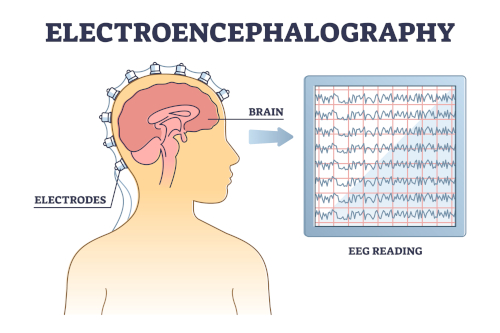 Brainwaves being recorded from different points on the scalp; ID 223366812 © VectorMine | Dreamstime.com
Brainwaves being recorded from different points on the scalp; ID 223366812 © VectorMine | Dreamstime.comA recording made from the electrodes in the cap is called an EEG (short for Electroencephalogram). The results are displayed in graph form, showing how the tiny voltages measured at each point of the scalp vary as brain activity changes.
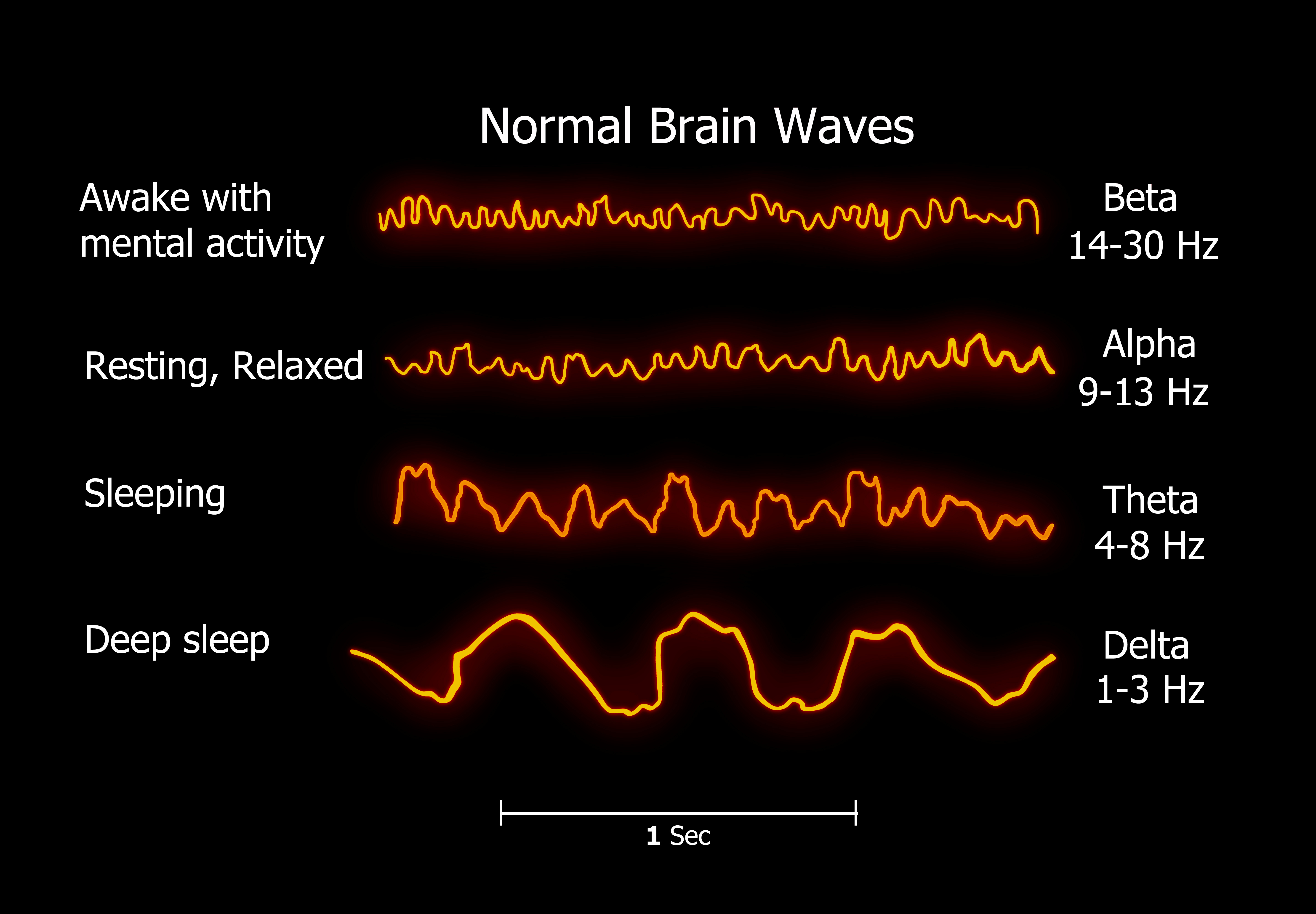 Typical brainwave frequencies for different states of consciousness; ID 118326163 © vishalgokulwale | Adobe.com
Typical brainwave frequencies for different states of consciousness; ID 118326163 © vishalgokulwale | Adobe.comfMRI
The science of consciousness needs
to explain how the brain works to create consciousness, with all the different parts
working together to make a single whole. A functional MRI scanner (an fMRI scanner) helps because it can show up which parts of the brain are actually "live" for each of the different aspects of our conscious activity. Aspects such as, thinking, feeling, seeing, remembering etc.
fMRI does this by recording changes in the flow of blood through the different parts of the brain.
When a part of the brain is active it needs more oxygen which is supplied by an increased flow of blood. It is this increased flow of oxygen-carrying blood which is directly "seen" by the fMRI scan, revealing exactly which parts of the brain are active and which are not for the each task.
On the scans shown on the medical tablet below, the parts that show up red are the parts that are active.
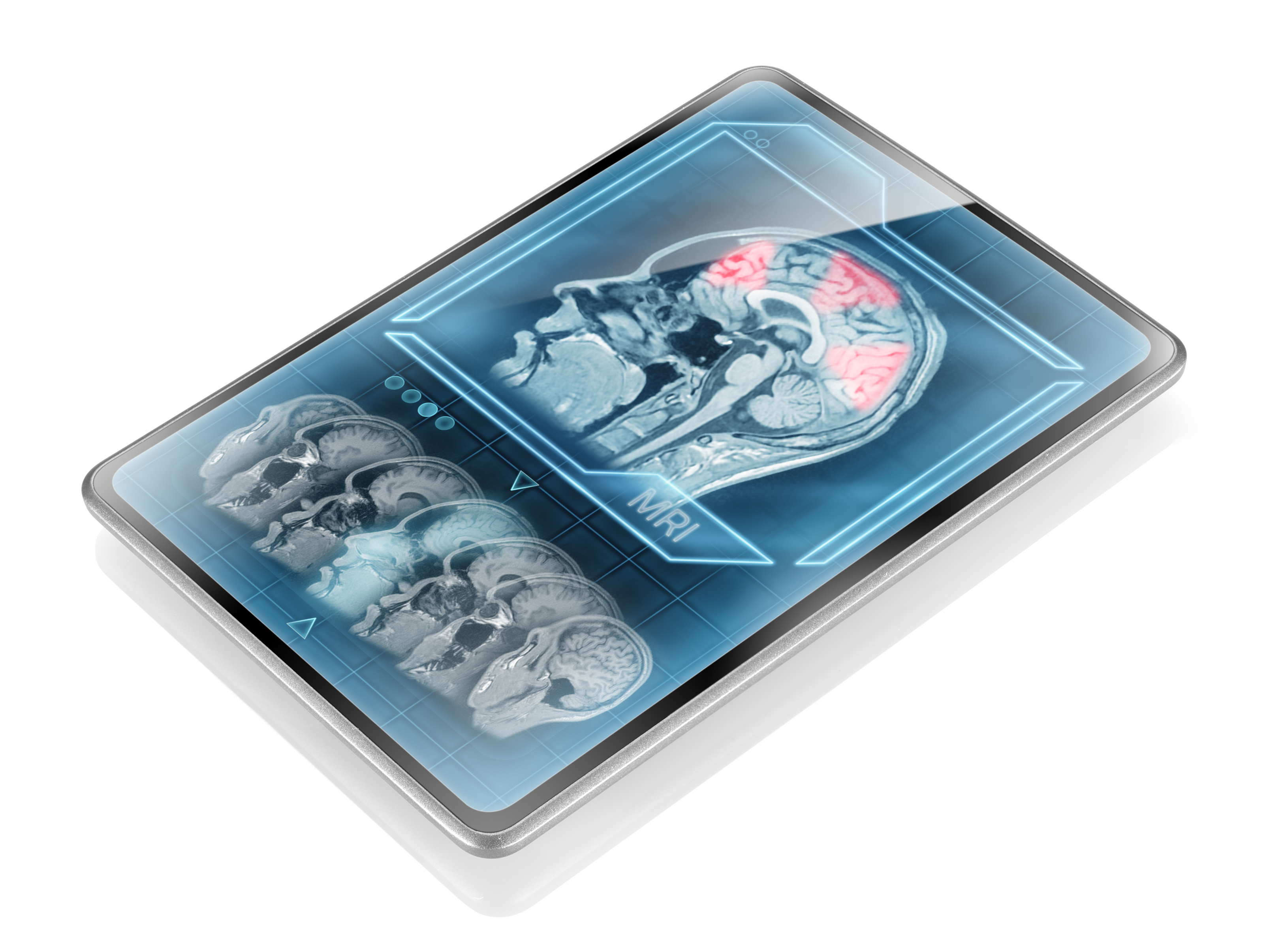 fMRI images on a medical tablet;
ID 224573979 © Štěpán Kápl | Adobe.com
fMRI images on a medical tablet;
ID 224573979 © Štěpán Kápl | Adobe.comResults
The cerebral cortex is associated with intelligence, personality and conscious thought; it is also associated with language and verbal memory. The cerebellum also plays a role in thought, plus emotions and social behaviour.
The cerebral cortex is heavily folded and divided into 4 lobes on each side. Each lobe has a role in conscious activity. For example, the frontal lobe of the cortex plays a key role in decision-making, whilst the rear lobe (parietal lobe) is associated with vision. Memory, like consciousness in general, has no obvious single centre but is associated with a number of centres from different parts of the brain.
You can find out more about the brain at John Hopkins Medicine
Conclusions
Consciousness, from this external scientific perspective seems to be associated not with any specific centre but with the organisation of the activity of different parts of the brain - each acting coherently with the others. Brain scientists are still trying to pin this idea down using mathematical models.
Scientists have divided consciousness into three parts:
- Wakefulness (I am awake not asleep)
- Awareness (My attention is working; I am aware of something)
- Sensory experience (I can see my dog)
They have a lot of information about each of these aspects but not on how they work together. Nor how the inner nature of consciousness is created by the material of the brain. In other words, the science of consciousness from the outside is incomplete.
The scientific view of the world
Scientists generally think that the physical world is the primary reality. In that case it becomes difficult to fully explain consciousness because the mental world is not physical. Are your thoughts real? No doubt they are to you! But they have no physical status nor can they be located in space (other than to say they must be in your brain).
Many scientists think that our consciousness and its associated mental states must be caused by the way the physical matter in a living brain behaves. Consciousness appears because we have a brain and because it functions in a particular way. On this way of thinking, the mental world must then be a kind of secondary version of reality, dependent on the physical world for its existence.
Some people think it more appropriate to simply state that consciousness has both physical and mental aspects and both aspects are real. The mental world of thoughts and feelings is of course of a different kind to the physical world of energy and matter. Consciousness encompasses both these different kinds of reality and ties them together. Our mental states represent the inner aspect of consciousness and the way our brains work represent the outer aspects.
Philosophically speaking, this is a kind of Panpsychism and implies that matter itself is not purely physical. Perhaps all physical "stuff" has an associated mental aspect; maybe even electrons have "minds". We'll discuss this and other ideas about the reality of consciousness on our Philosophy of Consciousness page.
The science of consciousness from the inside
 An image of the Sun reflected in a glass of water
ID 96638431 © strannik_fox | Adobe.com
An image of the Sun reflected in a glass of water
ID 96638431 © strannik_fox | Adobe.comFrom a spiritual perspective, the science of consciousness from the outside, has things the wrong way round.
Consciousness, though it has a physical aspect, is a different kind of thing from the material of our bodies, including the brain. Certainly, the activity of the brain as measured by scientists reflects our state of consciousness and we certainly need physical sense organs like eyes and ears to experience the physical world. However, from a spiritual perspective, awareness itself, the primary ability of consciousness to experience and to know, is a cosmic feature of life as a whole.
Consciousness is more fundamental than a collection of different brain parts working together. Our consciousness defines who we are. And "who we are" has a self at the basis of all of our conscious activities and experiences.
The individual self is like the reflection of the Sun in a glass of water. It appears in the glass but originates in the cosmic regions which exist independently of the glass. The quality of the reflection certainly depends on the nature of the glass and on the quality of the water it contains - but the reflection itself is not the water.
More on the Cosmic and spiritual reality of consciousness is discussed on the Pure Consciousness page.
- Home
- Consciousness
- science of consciousness